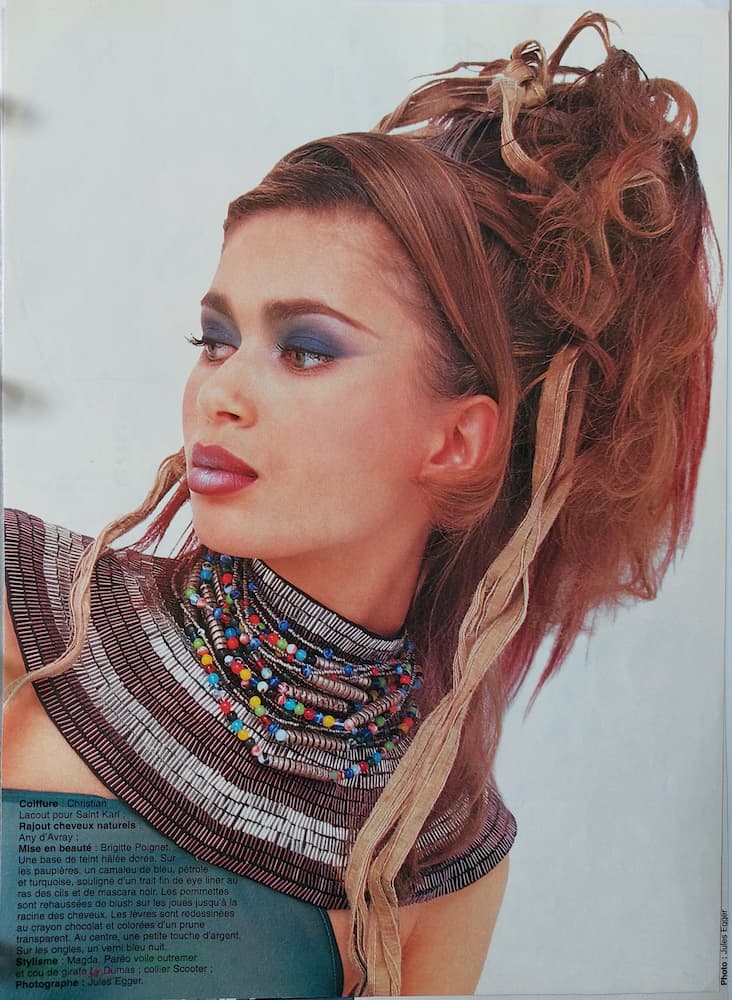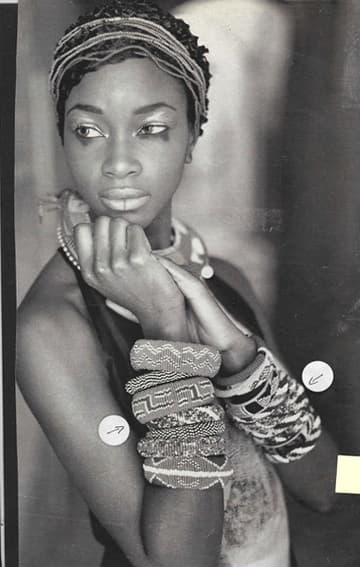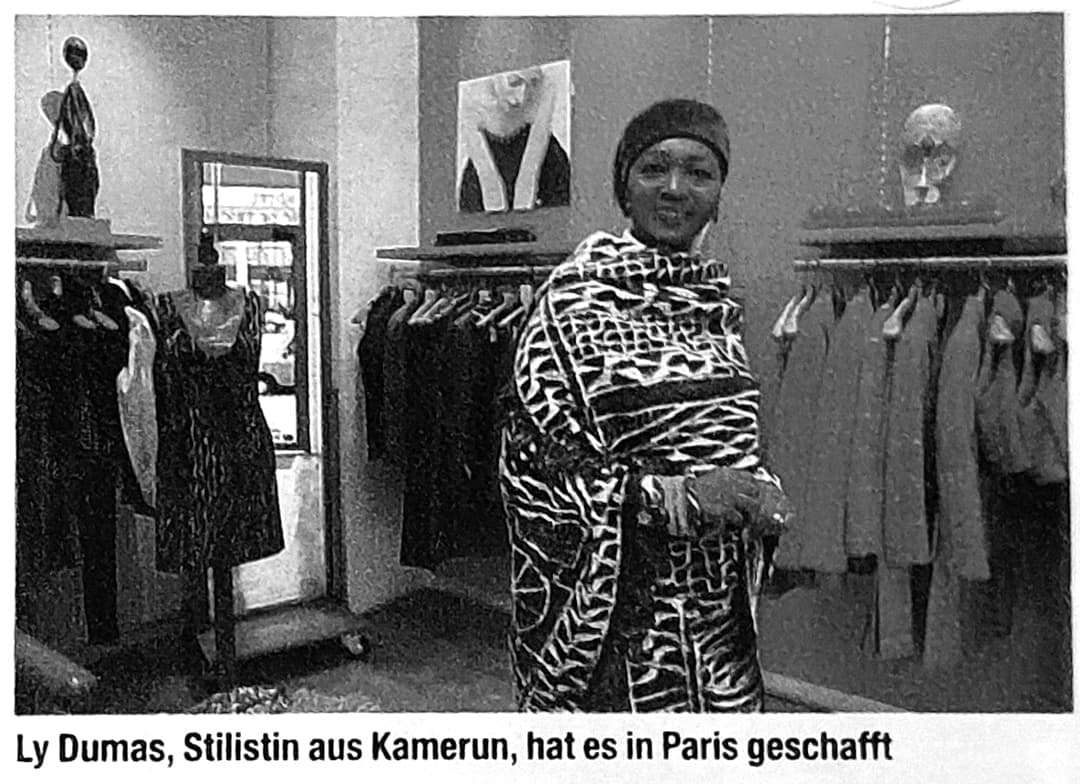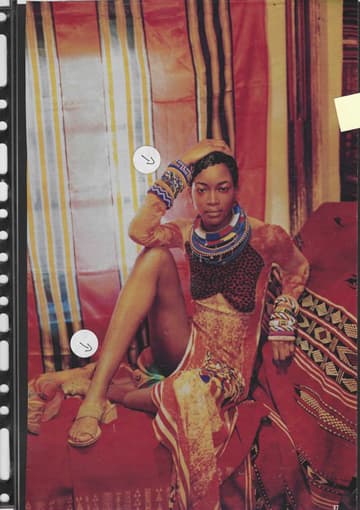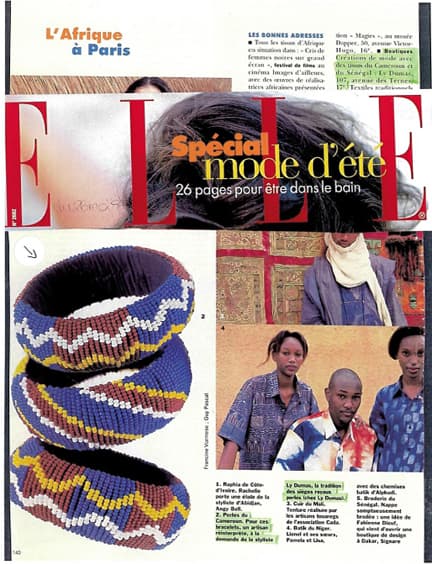Press: 1997
Nova Magazine
March 1997 issue features a short article illustrated by a (gorgeous) cognac-coloured evening gown combining, in true Ly Dumas’ style, the most prestigious European and African fabrics (in this case, Rabal and silk taffeta).
"Africa is not only about hungry bellies, coups and endemic neglect. It's also about people who live, love, sing, dance, think, and do not necessarily expect to receive hand-outs. It is essential not to forget this. Cameroon. Ly Dumas is a fashion designer who remains fascinated by the memory of the royal courts in her home country. For her, Fashion has this fleeting and light side that can nevertheless be meaningful.”
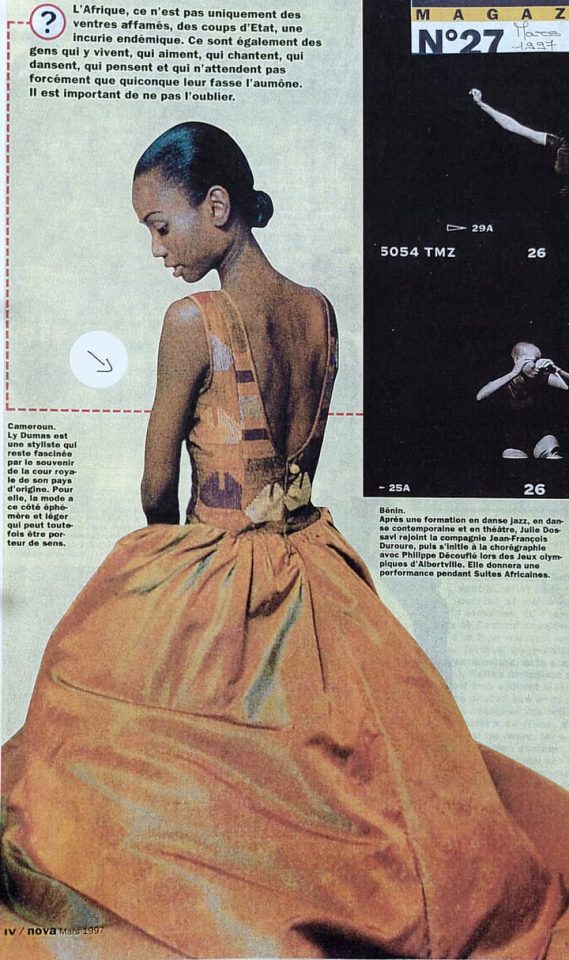
Passions de Femmes
In March 1997, the article published in the magazine Passions de Femmes “Ly Dumas, the multicultural designer” reiterates the princely origins of the fashion artist who uses royal African fabrics alongside noble materials from outside the continent and emphasises sustainability – the French-Cameroonian designer employs artisans from the four corners of Africa because:
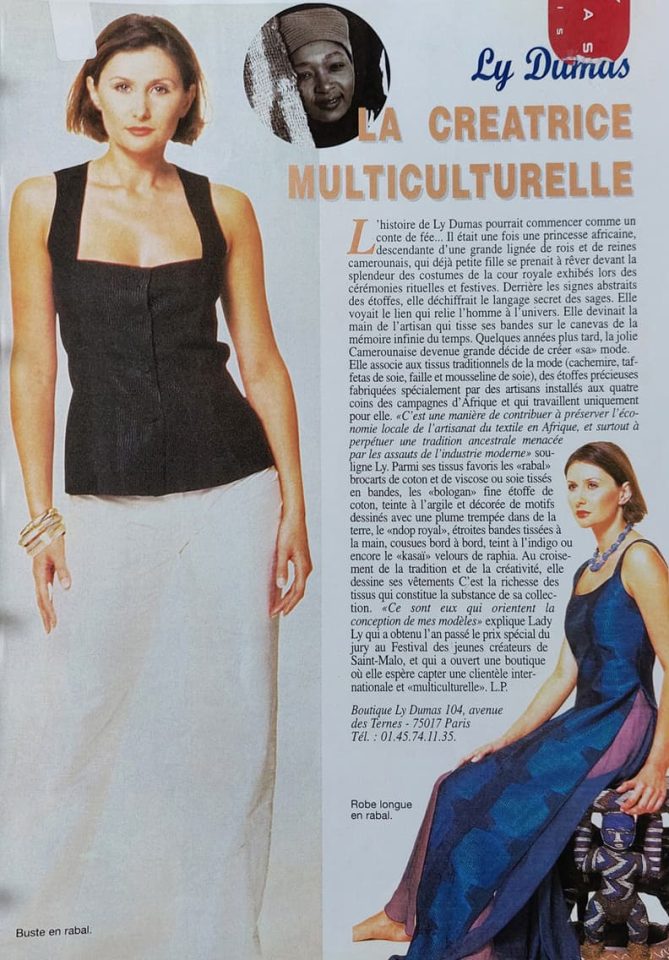
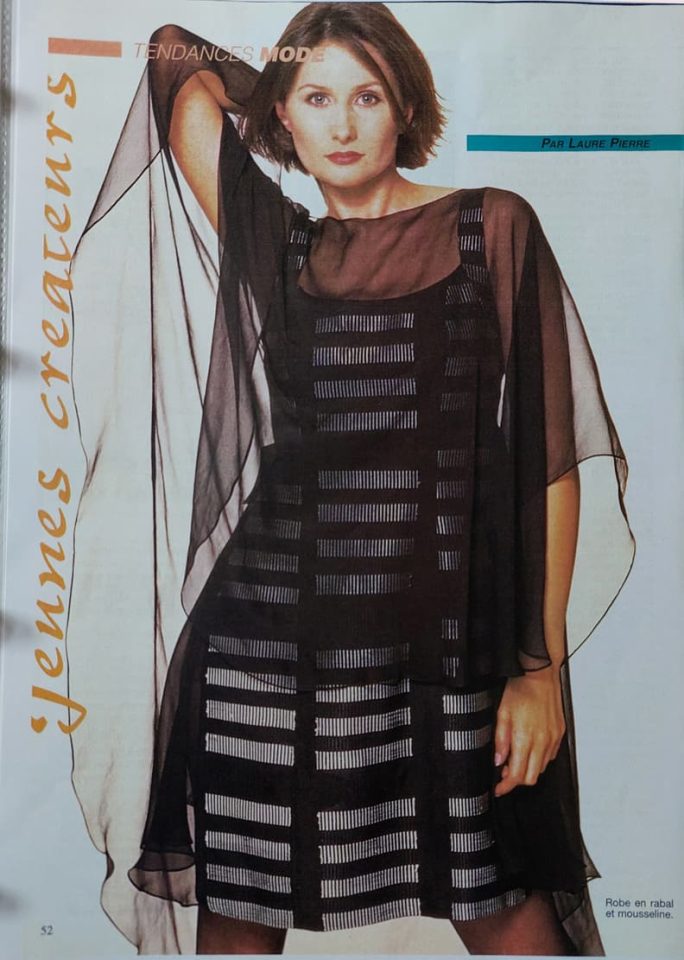
"It is a way to help preserve the local economy of textile crafts in Africa and, above all, to perpetuate an ancestral tradition threatened by the onslaught of modern industry.
… Ly Dumas designs her clothes at the crossroads of tradition and creativity. It is the richness of the fabrics that forms the substance of her collection. "They are what guides the design of my models," explains Lady Ly.
Jeune Afrique
Jeune Afrique magazine of 9 April publishes, under the heading “Time to live – Humanitarian”, an article by Sylvie Tellep Bisseck on the Fashion Show hosted by the Louvre – Carousel.
”An unprecedented rallying of fashion designers from South Sahara gave birth to African Stylists against AIDS. Five African designers, including the most talented – Nigerian Alphadi, Cameroonian Ly Dumas, Senegalese Colle Sow Ardo and Katoucha, as well as Cameroonian Zambo – have mobilised to raise funds for the pan-African organisation against AIDS. Under the guidance of Christophe Carrère, one of the fashion world’s leading artistic directors, the designers applied themselves to demonstrate their originality, drawing on tradition and
odernity.
Chris Seydou’s shadow hovered over the whole evening. He was one of thefirst to have made his mark, to be hailed by the guild, only to be taken by AIDS.”
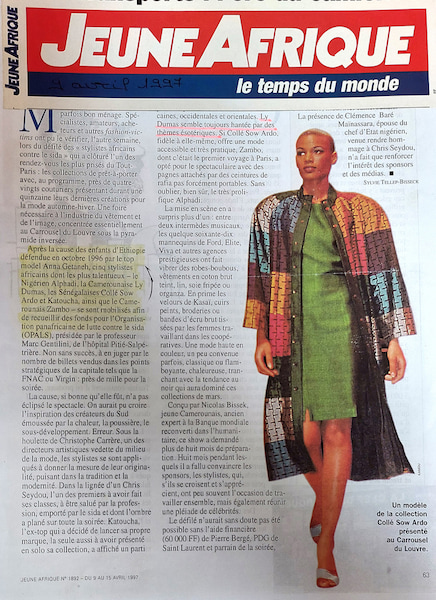
Le Figaro
In the June edition of Le Figaro and its supplement Madame Figaro, Stephane Bern reports of a highly appreciated Parisian social event, Prix de Diane Hermes, under the title “Chantilly l’africaine, un hommage couleur rendu par Hermès au Sénégal/African Chantilly, a colourful tribute to Senegal by Hermès”. The well-known journalist remarked:
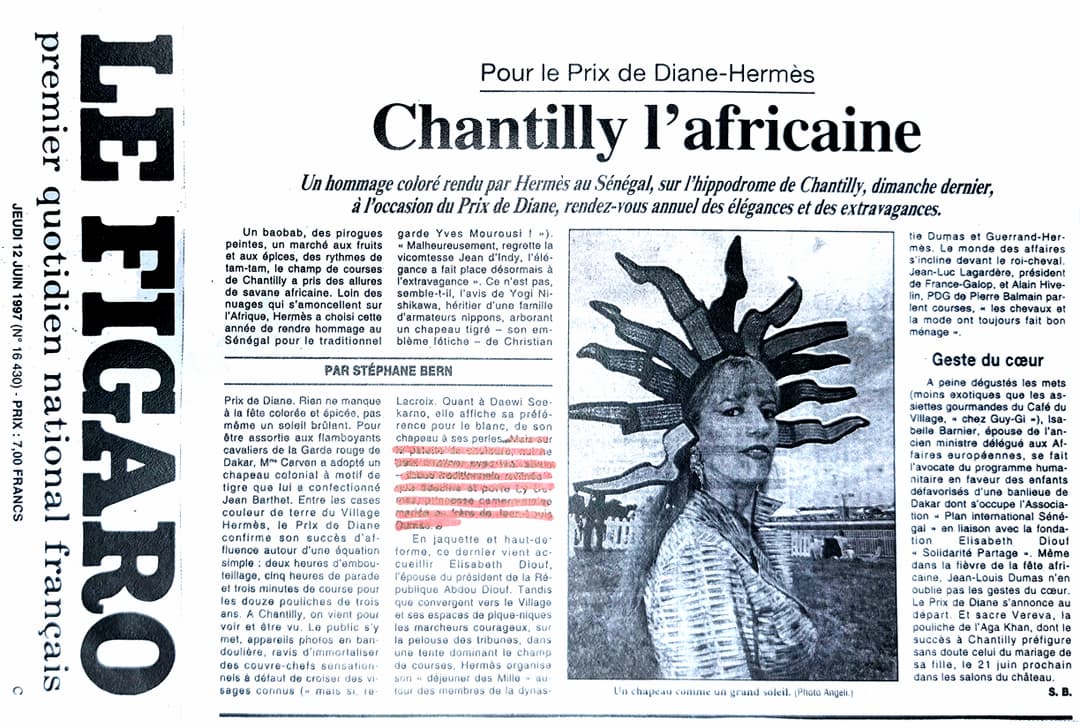
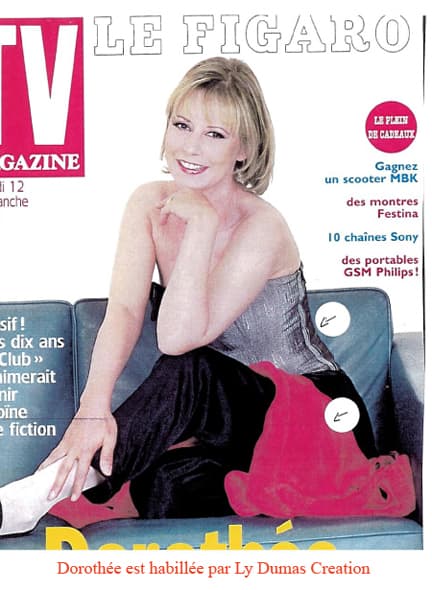
“With a baobab tree, painted pirogues, a fruit and spice market, and tam-tam rhythms, the Chantilly racecourse has embraced the appearance of an African savannah. Nothing is missing from the colourful and spicy festival, not even the burning sun… But on the palette of colours, no one can compete with the refined traditional Rabal fabric, designed and worn by Ly Dumas, a Cameroonian princess…”
Balafon
Balafon magazine, published by Air Afrique in Abidjan, dedicates a page of its July issue to Cameroonian artist Ly Dumas.
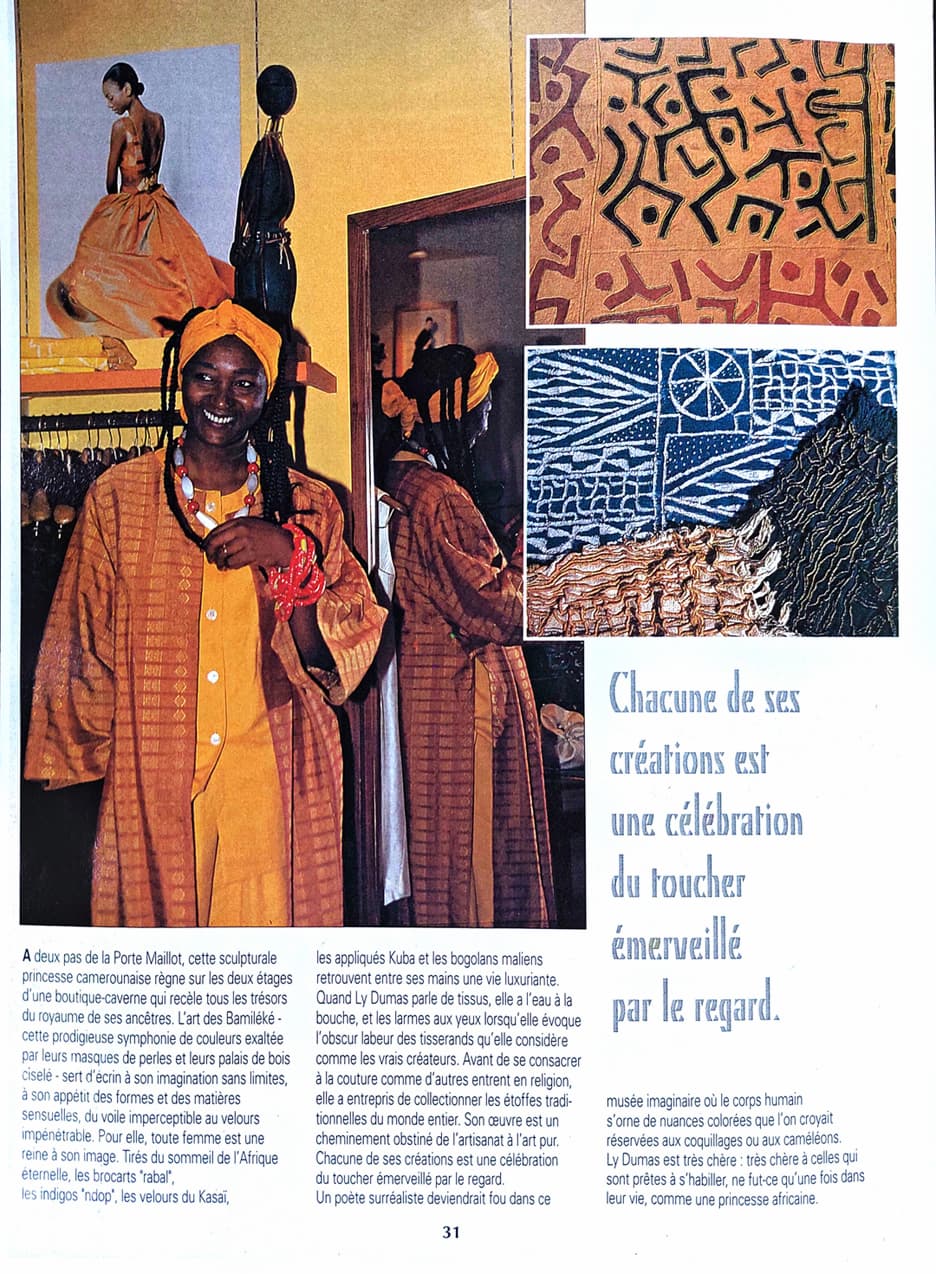
” Each of his creations is a celebration of the sense of touch enchanted by gaze. Just a stone’s throw from Porte Maillot, this sculptural Cameroonian princess reigns over the two-loor boutique that conceals all the treasures of her ancestors’ kingdom. The art of the Bamileke people – that prodigious symphony of colours exalted by their pearl masks and their chiselled wooden palaces – serves as a showcase for her boundless imagination, her appetite for sensual forms and materials, from imperceptible veils to impenetrable velvet. For her, every woman is a queen of her own image. Roused from the slumber of eternal Africa, Rabal brocades, Ndop indigos, Kasai velvets, Kuba appliqués and Malian Bogolans find a luxuriant life in her hands. Ly Dumas’ mouth and eyes water when she talks about fabrics and the obscure work of weavers, she considers to be the true creators. Before devoting herself to fashion, as others embrace a religion, she began collecting traditional fabrics from all around the world. Her work is a persistent journey from craft to pure art. Each of her creations celebrates the spell the sense of touch casts over the sense of sight. A surrealist poet would go mad in this imaginary museum, where the human body is adorned with coloured hues thought to be reserved for shells and chameleons. Ly Dumas is very dear to those who are prepared to dress, even if only once in their lives, like an African princess.”
Jeune Afrique
In the July 1997 issue of Jeune Afrique, in an article titled “Ly Dumas ou le textile roi/Ly Dumas or textile king”, Emmanuelle Pontie informs us:
"Among designers of African origin, Ly Dumas is perhaps the only one to cherish the traditional textiles of her continent so much. For many years, she has been fascinated by heavy woven fabrics, the secret motifs of Bogolans, earth and ochre prints from Mali, velvets of Kasai, Senegalese Rabal inlaid with silk strips, Ndop with raffia thread reserved for Cameroonian chiefs… No frills or complicated cuts. Velvets and heavy pieces of cotton fall straight. It is precise and simple. Some years ago, she opened a chic boutique on Avenue des Ternes in Paris. There, long dresses, straight suits and embroidered shirts reign like royal creations, precious ambassadors of the continent's history. It is beautiful. It is expensive. The concept is elitist. And customers are flocking to the store in search of a unique, rare model.
Ly came to clothing out of love for her raw materials. An intellectual, scientific, sometimes esoteric approach that makes these collections the amazing product of a historical fabric laboratory.”

L'Autre Afrique
In the 5 – 11 November edition, journalist Corinne Moncel signs an extensive portrait of Cameroonian stylist Ly Dumas.
"This fashion designer’s motto could be: happy life, hidden life. Shyness, discretion? Even in this portrait, she has approved for publishing, Ly Dumas hides. Behind a cloth, behind braids. Sophisticated, intelligent, open, active, curious, and eager to learn about other cultures, Ly Dumas may look like the woman she idealizes, but her true identity is an enigma. The two or three things we know about her we only half-know.
“That's my life," explains Ly. "I live in miscegenation, I want to share and mix things. To combine with African textiles, I needed noble fabrics like silk, cashmere, linen, muslin… There are many African designers, but I want to offer something to the initiated. This is my philosophy. As an African living in France trying to understand French culture, I wanted reciprocity in the spirit of haute couture.”
Yemen, Saudi Arabia, Kuwait, Italy and Japan, these are traditional haute couture markets where she sells her beautiful African materials. As for her window display in her shop on the Avenue de Ternes, in the 17 th district of Paris, it attracts customers from the posh districts of Neuilly, the 8 th and the 17 th . BCBG (Preppy)/Good-looking and very Parisian.
"They find a note of originality, new fabrics, beautiful finishes, colours," admits Ly Dumas when talking about her customers. "They are perhaps conservative in the way they appreciate work well done and noble materials. But they are open to other cultures.” Deep down, Ly Dumas' passion is not so much cloth as people. Always more at ease in her role as a traveller than as a fashion designer, she enthuses:"Right down to the very depths of Tibet, we have extraordinary things in common and incredible similarities, if only in weaving!"
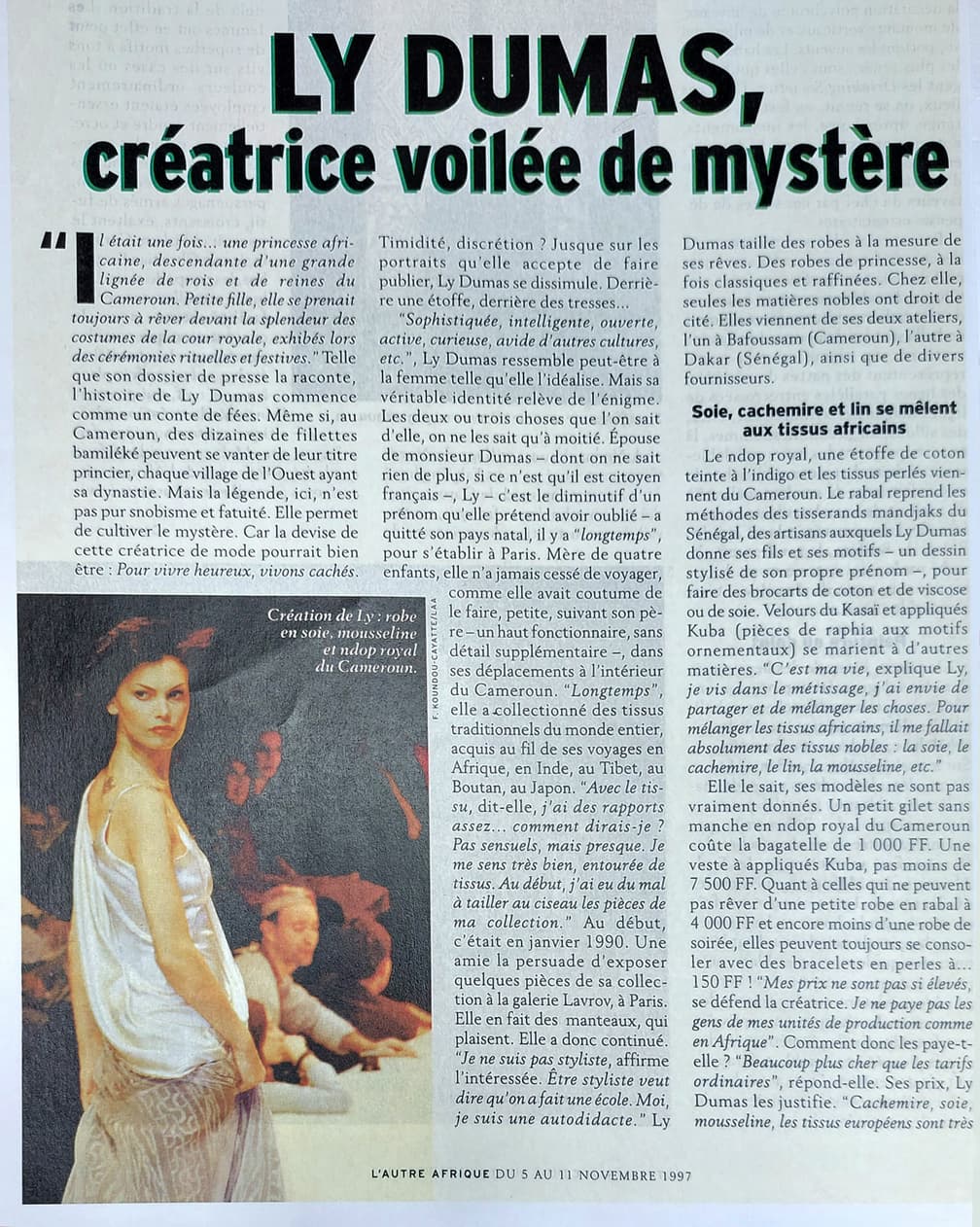
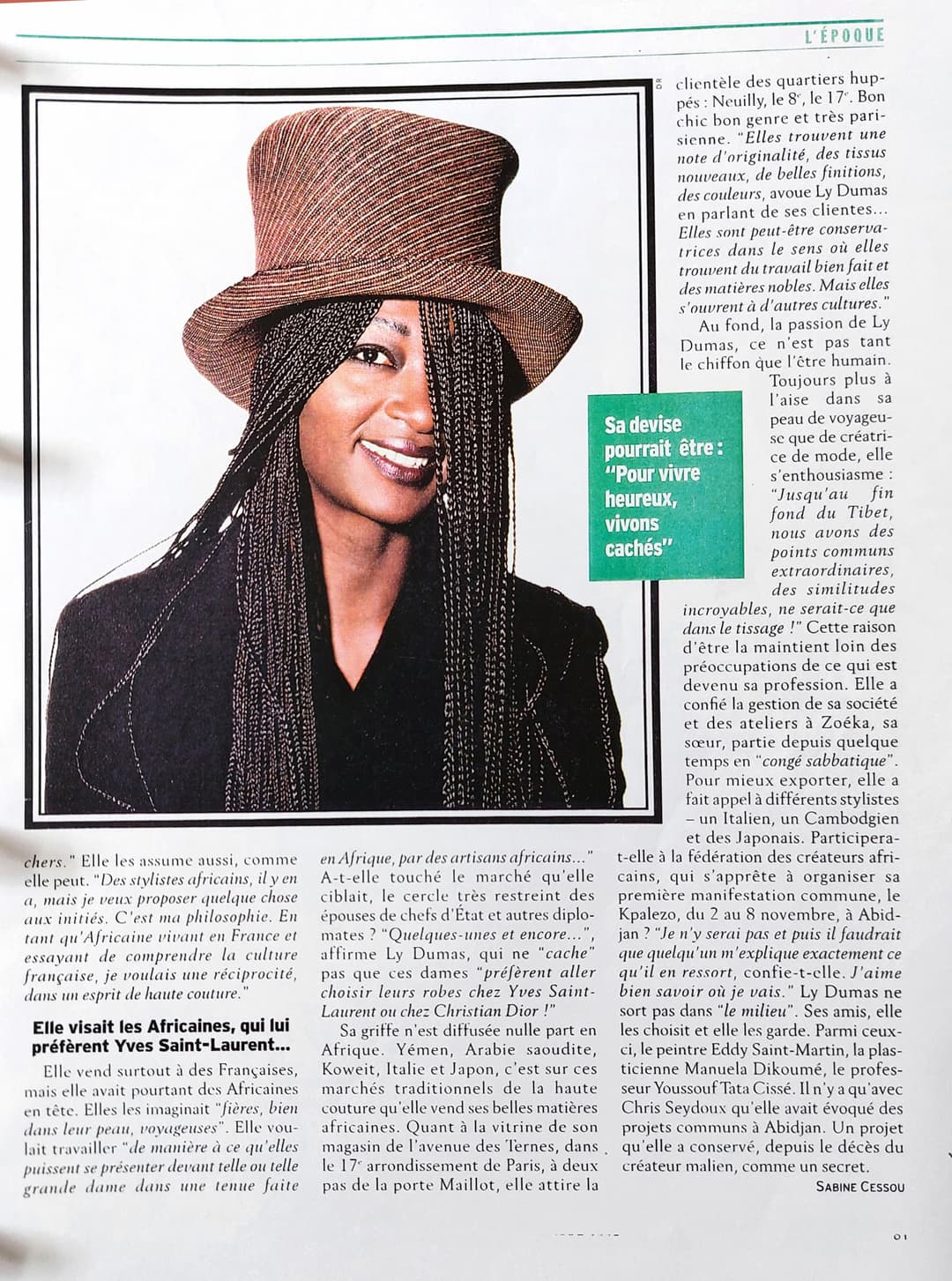
Revue noire
”By layering different materials, Ndop, Rabal, Kasai velvet, cashmere and silk, Ly Dumas pays tribute to the splendour of African royal courts and helps give value to the art and know-how of African textile artisans. Working with the artist Eddy Saint-Martin, she launched a line of hand- painted designs on silk, inspired by the Bamum alphabet invented in the 19th century in Cameroon. The clothes she creates are fragments of her life. They represent a journey full of encounters and emotions.”
